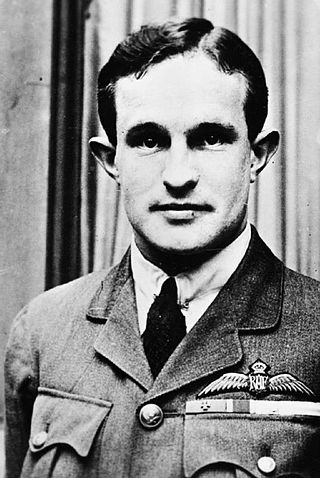Related Research Articles

Andrew Frederick Weatherby (Anthony) Beauchamp-Proctor, was a South African airman and a recipient of the Victoria Cross, the highest award for gallantry in the face of the enemy that can be awarded to British and Commonwealth forces. He was South Africa's leading ace of the First World War, being credited with 54 aerial victories.

Captain William James Arthur Duncan was a Canadian aviator and a professional ice hockey player, coach, and general manager. In 1926 he served as the first team captain, head coach, and general manager of the Detroit Cougars of the National Hockey League (NHL).

Francis Granger Quigley, was a Canadian aviator and flying ace of the First World War, who was credited with 33 aerial victories. He was notable for scoring the majority of his victories against German fighter planes.
William Ernest Shields DFC & Bar was a Canadian First World War flying ace, officially credited with 24 victories.
John Inglis Gilmour, was a British flying ace of the First World War. He was the highest scoring Scotsman in the Royal Flying Corps, with 39 victories.
Henry Winslow Woollett, was a British flying ace and the highest scoring British balloon busting ace credited with 35 aerial victories, including eleven balloons, during the First World War. He continued to serve in the Royal Air Force until the 1930s.
Major Thomas Sinclair Harrison was a World War I fighter ace credited with 22 aerial victories. He was a balloon buster, as he destroyed two enemy observation balloons. This made him the fourth highest scoring South African.
Captain George Edwin Thomson DSO MC was a Scottish World War I flying ace credited with 21 aerial victories. He was the second ranking ace of his squadron, and one of the leading Sopwith Camel aces.
Captain Douglas John Bell was a South African World War I fighter ace credited with 20 aerial victories. He was one of the first fighter pilots to successfully engage an enemy multi-engine bomber. He became the leading ace of the nine in No. 3 Squadron RAF.
Major George Lawrence Lloyd was a Rhodesian-born flying ace of the First World War, credited with eight aerial victories.
Captain Charles William Cudemore was a British World War I flying ace credited with 15 aerial victories.
Captain Reginald Howard Rusby Distinguished Flying Cross|DFC was a World War I flying ace credited with ten aerial victories.
Lieutenant George Raby Riley was a British World War I flying ace credited with thirteen aerial victories. He was an ace balloon buster, as well as an ace over enemy aircraft.
Second Lieutenant Maurice Edmund Mealing MC was a World War I flying ace credited with 14 aerial victories.
Group Captain Norman William Reginald Mawle was a British World War I flying ace. He was credited with 12 official aerial victories during the First World War. During World War II, he returned to his country's service, not retiring until 1954.
Captain John Steel Ralston was a Scottish World War I war hero and flying ace. After winning a Military Cross in 1916 for lifesaving gallantry while serving in the infantry, he was credited with 12 official aerial victories as a fighter pilot before he was killed in action.
Flight Commander Guy William Price was an Irish Royal Naval Air Service flying ace during World War I, having 12 confirmed aerial victories. He was awarded the Distinguished Service Cross twice within a 22-day period.
Captain Maurice Douglas Guest Scott was a British World War I flying ace credited with twelve official victories, including one observation balloon, while a member of the Royal Flying Corps. He scored as both an aerial observer and a pilot; he was successful while serving with three different squadrons.
Captain Frederick Elliott Brown was a Canadian World War I flying ace credited with 10 aerial victories. He returned to military service during World War II.
Captain John William Aldred was an English World War I flying ace credited with eight aerial victories. He began military service in World War I as an infantryman and transferred to flight duty as an observer. After scoring two aerial victories and winning the Military Cross, he qualified as a fighter pilot, scored six more triumphs, and earned a Bar to his MC in lieu of a second award.
References
- ↑ "William Harrison". The Aerodrome. Retrieved 1 January 2018.
- ↑ "No. 30213". The London Gazette (Supplement). 1 August 1917. p. 7878.
- ↑ "No. 30155". The London Gazette (Supplement). 28 June 1917. p. 6385.
- 1 2 Shores, Christopher; Franks, Norman; Guest, Russell (1990). Above the Trenches : A Complete Record of the Fighter Aces and Units of the British Empire Air Forces, 1915-1920. Grub Street. p. 186. ISBN 978-0919195110.
- ↑ "No. 30681". The London Gazette (Supplement). 13 May 1918. p. 5700.
- ↑ "No. 31802". The London Gazette . 2 March 1920. p. 2465.